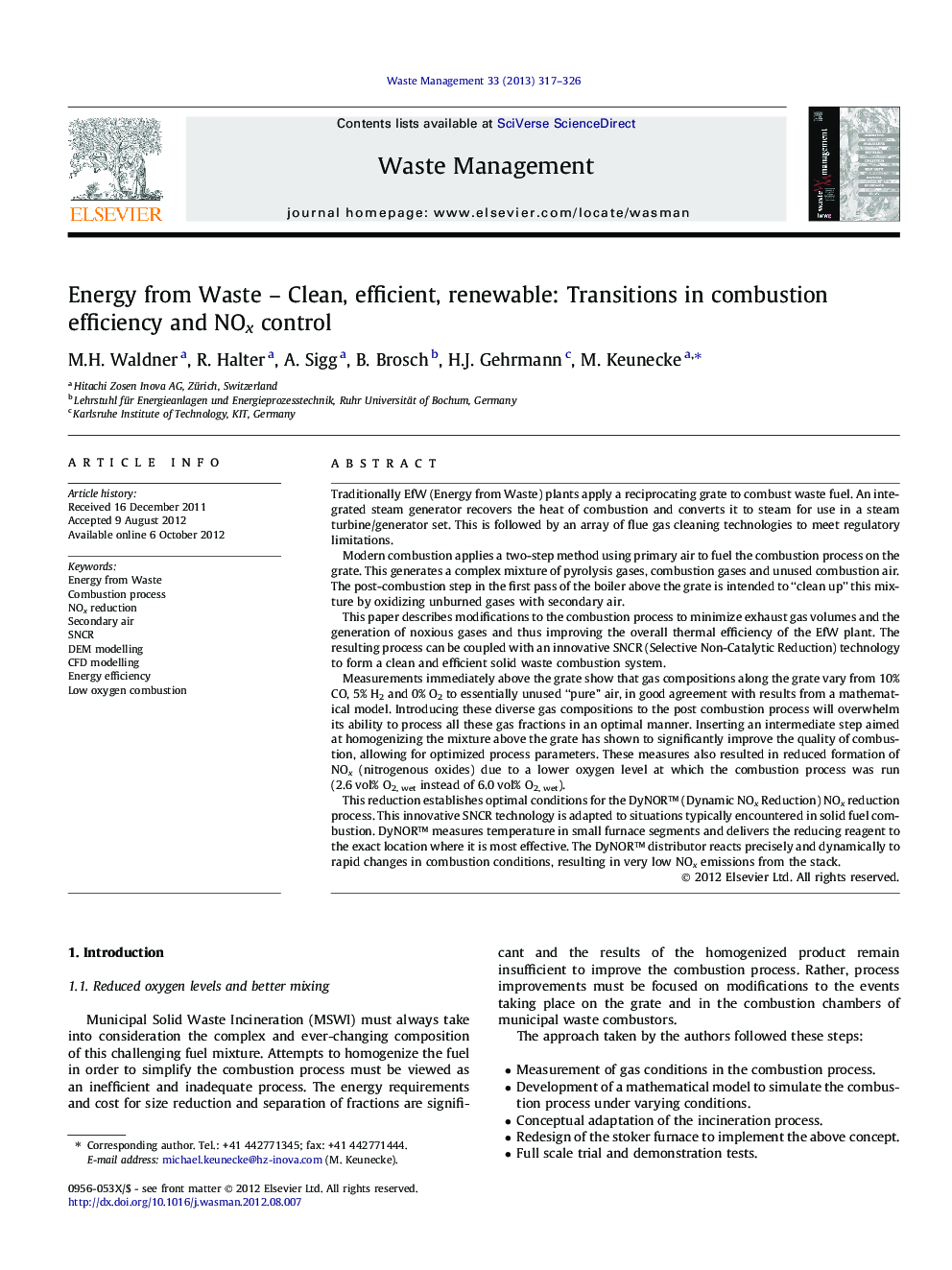| کد مقاله | کد نشریه | سال انتشار | مقاله انگلیسی | نسخه تمام متن |
|---|---|---|---|---|
| 4472071 | 1315056 | 2013 | 10 صفحه PDF | دانلود رایگان |

Traditionally EfW (Energy from Waste) plants apply a reciprocating grate to combust waste fuel. An integrated steam generator recovers the heat of combustion and converts it to steam for use in a steam turbine/generator set. This is followed by an array of flue gas cleaning technologies to meet regulatory limitations.Modern combustion applies a two-step method using primary air to fuel the combustion process on the grate. This generates a complex mixture of pyrolysis gases, combustion gases and unused combustion air. The post-combustion step in the first pass of the boiler above the grate is intended to “clean up” this mixture by oxidizing unburned gases with secondary air.This paper describes modifications to the combustion process to minimize exhaust gas volumes and the generation of noxious gases and thus improving the overall thermal efficiency of the EfW plant. The resulting process can be coupled with an innovative SNCR (Selective Non-Catalytic Reduction) technology to form a clean and efficient solid waste combustion system.Measurements immediately above the grate show that gas compositions along the grate vary from 10% CO, 5% H2 and 0% O2 to essentially unused “pure” air, in good agreement with results from a mathematical model. Introducing these diverse gas compositions to the post combustion process will overwhelm its ability to process all these gas fractions in an optimal manner. Inserting an intermediate step aimed at homogenizing the mixture above the grate has shown to significantly improve the quality of combustion, allowing for optimized process parameters. These measures also resulted in reduced formation of NOx (nitrogenous oxides) due to a lower oxygen level at which the combustion process was run (2.6 vol% O2, wet instead of 6.0 vol% O2, wet).This reduction establishes optimal conditions for the DyNOR™ (Dynamic NOx Reduction) NOx reduction process. This innovative SNCR technology is adapted to situations typically encountered in solid fuel combustion. DyNOR™ measures temperature in small furnace segments and delivers the reducing reagent to the exact location where it is most effective. The DyNOR™ distributor reacts precisely and dynamically to rapid changes in combustion conditions, resulting in very low NOx emissions from the stack.
► We measure the gas composition above the grate in a waste to energy plant.
► We model the gas composition at the same location and find very good agreement with the measurements.
► We chose an alternative point for injection of recycled flue gas.
► We reduce oxygen excess and volume flow of flue gases an improve energy efficiency of the WTE plant.We virtually segregate a boiler into vertical sections in order to optimize the ammonia injection in the fluctuating temperature field.
► We develop an improved SNCR method which dynamically reacts on the changing conditions in the boiler. This method closes the gap...
Journal: Waste Management - Volume 33, Issue 2, February 2013, Pages 317–326